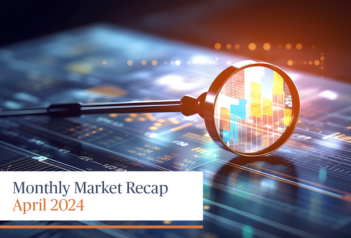As December rolls around, it’s tax time!
That’s right, tax time at Sendero starts in December. While the financial industry has been focused on lowering expense ratios for passive strategies over the last few years, Sendero has adopted a “Total Client Cost” approach.
This approach started as an effort to compare active and passive strategies in an after-tax basis. This is achieved by reducing the gross performance of a mutual fund or ETF by the tax drag from income distributions as well as short and long-term capital gains.
We initially adopted this concept for all our current strategies, but also added the total expense ratio paid by clients as well as any commissions, and other expenses. We strongly believe in giving clients transparency and understanding of the total cost associated with managing portfolios.
ETFs are tax efficient and the great majority rarely make any capital distributions (a few commodity and leveraged ETFs do however). And while one strategy may look “cheaper” because it has a low fee, we want to account for all the annual costs associated with owning a mutual fund, stocks in a separately managed account, or being invested in a limited partnership.
As the saying goes: “It’s not what you make but what you keep.”
Using Bloomberg data, the chart below shows you the result of our work for several Emerging Markets and International ETFs and mutual funds. We broke down the tax cost ratio in blue, the manager cost or “expense ratio” in orange, and the trading spread for ETFs in yellow. As you can see in this example, the two Emerging Markets ETFs not only have a different manager cost, but a different total cost for investors. The first one has a higher tax drag but has a total cost of 0.63% points versus the second one at 1.11%.

We are incorporating this analysis in our due diligence process for potential new strategies we are looking to invest in. Are these strategies tax-efficient? What are the benefits for clients of being invested in one manager versus another manager outside of performance? Does the tax burden offset any performance alpha generated by the manager? Do clients receive 1099s or K-1s? What is the timing for issuing those K-1s and how complicated are they?
We are currently engaging all our managers to find out what potential year-end distributions will be made in 2019. These capital gain distributions are usually paid in December and the price or NAV of a mutual fund will drop to reflect the amount of the distribution.
Investors should monitor several dates going into the end of the year:
- The “Declaration” date is the date on which a mutual fund or ETFs will announce their next dividend or capital gain payments.
- The “Record” date is the date that the mutual fund company reviews its records to see which shareholders qualified for the next dividend payment. The record date is typically one-to-two days after the ex-dividend date.
- The “Ex-dividend” date is the date for new shareholders that disqualifies them for earning a dividend in the next period. In other words, investors who buy shares on or after the ex-dividend date will not earn a dividend in the next payment. Investors must buy before the ex-dividend date to qualify for the next dividend.
- Finally, the “Payable” date refers to the date that any declared distributions are due to be paid out.
The following timeline is an example of an actual large cap mutual fund declaring a long-term capital gain distribution:

The chart below shows the price drop by $3.76 or 17.6% due to the distribution made on December 14, 2018:

Why this matters is three-fold: First, whether you owned a mutual fund on January 1st or bought it on the day right before its Ex-dividend date, you are responsible for all of the investors’ tax burden no matter how long you actually have been invested. We do not believe this is best practice and we wait until after the distribution is made as so not to create a taxable event for new investors.
Second, depending when the capital gain is actually paid versus when it is declared by the manager, an investor’s performance and actual market value can be distorted over year-end, and thus potentially increasing the investor’s tax preparation bill unnecessarily.
Third, as happened in 2018, market corrections late in the year can create outflows causing managers to raise cash and sell securities. This can generate larger than expected capital gain distributions, effectively raising the taxable impact for investors who remain in the fund.
Sendero focuses on limiting the impact of taxes at the portfolio level, including tax-loss harvesting, portfolio rebalancing and timing of putting cash to work, investment vehicles, tax preparation and timing, and tax location (i.e.: taxable versus tax-exempt account).
We understand every investor has a different tax situation and we diligently build your portfolio to maximize the after-tax and after-fees return to meet your long-term goals.
Thank you for your continued confidence in Sendero.

Amaury de Barros Conti
Vice President, Research and Strategy


